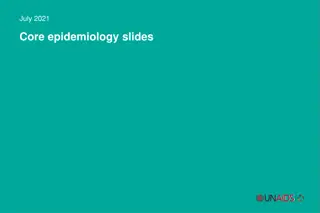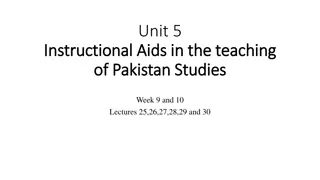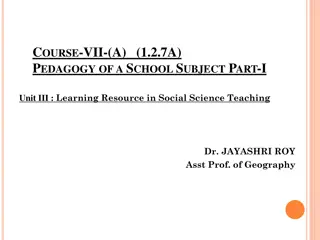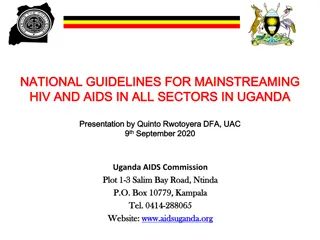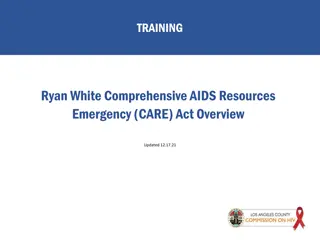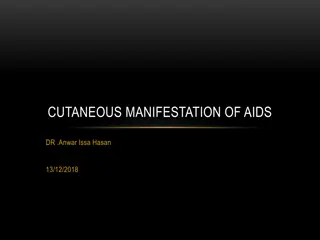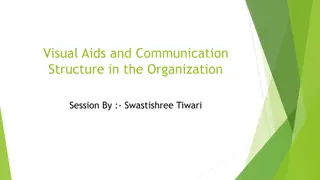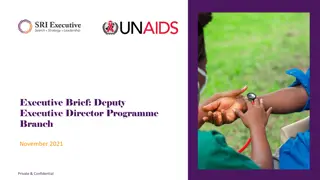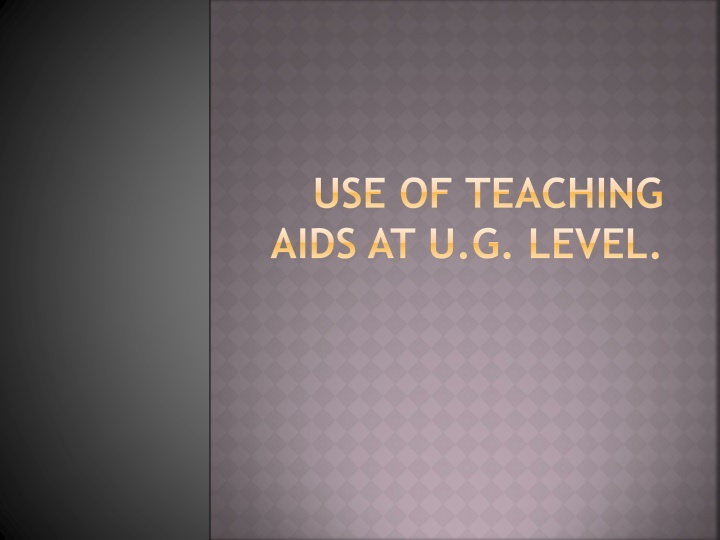
Enhancing Teaching at University Level with Innovative Aids
Explore the use of various teaching aids such as blackboards, charts, flashcards, realia, OHP, tape recorders, videos, and television to facilitate interactive and engaging learning experiences at the U.G. level. These aids help in visualizing concepts, promoting active participation, and enhancing information retention among students.
Download Presentation

Please find below an Image/Link to download the presentation.
The content on the website is provided AS IS for your information and personal use only. It may not be sold, licensed, or shared on other websites without obtaining consent from the author. If you encounter any issues during the download, it is possible that the publisher has removed the file from their server.
You are allowed to download the files provided on this website for personal or commercial use, subject to the condition that they are used lawfully. All files are the property of their respective owners.
The content on the website is provided AS IS for your information and personal use only. It may not be sold, licensed, or shared on other websites without obtaining consent from the author.
E N D
Presentation Transcript
USE OF TEACHING AIDS AT U.G. LEVEL.
THE BLACKBOARD 1] It can be transformed into a visual aid with the help of chalk. 2]Neatness and Tidiness. 3] Judicious use of space. 4] Visibility.
BLACKBOARD 5] Accuracy. 6] Smoothness of execution. 7] Pictures. 8] Charts.
CHARTS ^ word missing. Sp spelling mistake. Gr wrong grammer. // make a paragraph. ?? What do you mean.
FLASH CARDS 1] emphasise/bring home an idea 2] teach reading, sounds and play games 3] prepare learner and present flashcards 4] apply information, test learner and review
REALIA To present vocabulary To present new structures For dramas/role play For language games
OHP 1] seen easily by everyone in the classroom 2] no wastage of time for the teacher 3] the teacher plans the lesson 4] pie diagrams, bar graphs & charts presented
TAPE RECORDER Listening to sounds, words, sentences & conversation. Listening and note making. Reading aloud practice. Listen to yourself. Recording dialogues/conversations. Discussions.
VIDEO Self control in the hands of the teacher. Teach variety of subjects . Shooting
TELEVISION Cost Ease of manipulation of the equipment Compatibility with the size of the class Flexibility of use (that is, different purposes ) Control status (by the user ) Preparation time.
TO TEACH DICTIONARY REFERENCE SKILLS By Gawali N. T.
CREATE A CLASS PICTIONARY A definition The part of speech The etymology A picture A sentence using the word
CONFUSING DEFINITIONS Pick out a correct definition among several false ones. Select a word from the Dictionary and write it. List four def. include one that is real &three distracters Label the definitions ABCD. Check the correct def.
DICTIONARY HUNT Make students familiar with different parts of a dictionary entry. Divide the class into pairs& ask them to use the dictionary to find list of clues. To find the word of French origin, a pronoun, illustration, a word with four syllables, or word used both as noun &verb.
DEFINITION PATROL Assign one or two students to be on Dictionary Duty. Read out unfamiliar word during class activities(reading aloud ) Mark the new word using a highlighter through the year.
ABC ORDER To understand alphabetical order Practice skill like cereal boxes, candy bar wrappers, students photograph (labelled with names )and children s books Students who finishes his object group first is the winner
TEACHING LISTENING SKILLS By Karale N.G.
HEARING VS. LISTENING Hard of listening rather than hard of hearing Hearing is simply the act of perceiving sound by the ear (biological given ) But listening requires concentration so that the brain processes meaning from words and sentences. It is not hearing but listening that leads to listening.
OBJECTIVES AND SUB-SKILLS OF LISTENING Listening for Appreciation Listening with empathy Listening for comprehension Discerning listening Evaluative listening
NON VERBAL LISTENING Being quiet Maintaining eye contact Displaying openness Listening without responses Acknowledgment
VERBAL LISTENING Necessary to speak to understand the speaker Listener may paraphrase the communication and ask for some feedback or meaning Need to learn beyond words Need to be aware of nonverbal message and behavior Speaker s body language must match the speech Listener can express their inability to listen Expression like I m sorry, I m busy at the moment. Can I get back to you later?
LISTENING ACTIVITIES Listening for individual sounds (vowels and consonants ) Listening for telephone numbers Listening to conversations for meaning of the words and content (followed by questions ) Telephone conversations (for sharing information and taking message ) Following directions (being given face to face or on the telephone)
LISTENING ACTIVITIES Listening to stories and doing follow up activities Listening to a conversation (intonation of speakers and determining meaning ) Find a location on a map by listening to oral directions Conversation at a store, restaurant, buying tickets (train, cinema, theatre, museum, booking agent, etc.)
SPELLING AND SYLLABLES Spelling of the main word in bold type The word divided into syllables eg. De-vel- op-er. Spelling of words based on this word are given at the end of the entry
PRONUNCIATION SYMBOLS Indicates the sounds of consonants &vowels Pronunciation keys used In the pronunciations guide to a word [bus]b^s
PARTS OF SPEECH How a word function in a sentence What part of speech a word is noun, verb etc The part of speech is abbreviated and printed in italics Examples Adj-adjective; n-noun Adv-adverb;prep-preposition Conj-conjunction; pron-pronoun Interj-interjection; v-verb,
DEFINITIONS More than one meaning Each meaning is numbered when there is more than one meaning Example for the word degree. 1. a step or stage in a process 2. a unit of measurement for angles and curves 3. a title conferred on students by a college, university, or professional school upon completion of a program of study.
TEACHING WRITING SKILLS By Asst. Prof Gawali N.T.
FEATURE OF WRITING Text a] formats b] text types c] descriptive d] discussive e] narrative f] analytic g] evaluative h] formal i] informal
MICRO SKILLS Vocabulary Spelling Grammer Punctuation
MACRO-SKILLS Content Correctness Completeness Clarity Creativity Conciseness complex
PACES Purpose Audience Experience Code self
PURPOSE To entertain To inform To educate To persuade To impress upon To evaluate others To express oneself To moralize
AUDIENCE AND CODE Types of audience Awareness/knowledge of the audience Adapt ourselves to audience To make the audience accept us as we are Code refers to the language we use and the strategies we employ
EXPERIENCE Memory Information from sources Literature Participation Imagination research Personal experience
SELF Self image- 1] optimist 2] realists 3] emotional 4] cold and distant 5] mysterious 6] confused self 7] any other
APPROACHES TO TEACHING WRITING Process oriented writing messy, tedious and challenging.eg. Lincoln. Product-oriented writing model text and element of content, language, format and style.
STAGES OF COMPOSING Brainstorming for ideas/planning/clustering Drafting Writing Editing Rewriting
CHARACTERISTICS OF GOOD WRITING Simple words Short sentences Avoid clich s Avoid sweeping statements Avoid stereotyping
FUNCTIONS/USES OF LITERATURE Why we study literature Holds the mirror of society Originality Moral consciousnesses Craftsmanship
USES To know the historical, cultural background To know its people, country and its language To understand the folklore of the nation Subject for study in examination in schools and colleges
USES Reading as cheapest and easiest forms of enjoyment for literate people Worlds literature can be read and enjoyed To instruct Familiar with literature with any language through translation
USES Literature has a moral purpose Eg. Hamlet, The wild Duck by Ibsen Same as the use of History or Philosophy Learn more about human problems
FUNCTIONS Literature faces the test of time Great or classical literature written because of literature Source of knowledge Bread and butter To understand oneself and others To evaluate or judge oneself and others To criticizes oneself and others
USES Do not show discrimination Means of communication E.g.. Catlogue,newspaper,chart,maps,tour guide, novels,poetry,drama etc. are various forms of literature
ELEMENTS OF NOVEL By Asst. Prof. Gawali N. T. Gandhi College Kada. Tal. Ashti Dist. Beed.
ELEMENTS OF NOVEL Introduction novella Historical Background Rise of novel Different from other genre
PLOT Different from other form eg. The king died and the queen died. The king died then the queen died. tragic or comic
NARRATION Types of narrative First person third person
CHARACTERIZATION Flat characters or type Round Major Minor Realistic



